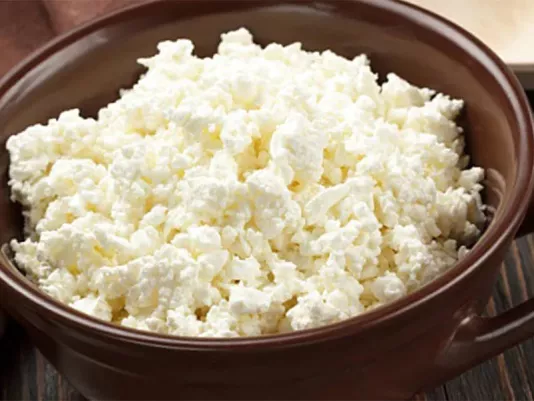Savory Zucchini Pie Made from Phyllo Dough
Spicy zucchini filo pastry pie - a recipe from Greek cuisine, crispy thin filo pastry with a juicy curd zucchini filling.

Cottage cheese is a dairy product known to humanity for hundreds of years and present in the cuisines of many nations. It is obtained through natural or controlled fermentation of milk, followed by whey separation. The result is a soft, grainy mass with a pleasant milky flavor, which serves as the basis for numerous culinary dishes. Cottage cheese is notable for its high content of protein, calcium, and beneficial trace elements, which is why it is valued not only as an ingredient for desserts and baking but also as a standalone dietary product. From my own experience, I have repeatedly seen that cottage cheese has a unique ability to pair with a wide variety of foods: from berries and fruits to herbs and vegetables, adding tenderness and satiety to every dish. Thanks to this versatility, it is used both in everyday home cooking and in professional gastronomy. Moreover, modern culinary trends once again highlight cottage cheese as a valuable product for creating light and healthy meals.
Cottage cheese is a unique product that combines high nutritional value with accessibility in everyday diets. It contains easily digestible dairy protein that provides the body with essential amino acids for tissue repair and muscle support. In addition, it is rich in calcium and phosphorus – elements important for healthy bones and teeth. I have always noted that regular consumption of cottage cheese helps maintain a proper balance of trace elements, especially during childhood and adolescence, when the body is actively growing. The B vitamins contained in cottage cheese support the normal function of the nervous system and improve metabolism. Cottage cheese is also recommended for those who care about cardiovascular health, as it contains potassium and magnesium. Thanks to the low fat content of fat-free varieties, this product is suitable for dietary nutrition and recovery after physical activity. In my cooking practice, I have found that even a small portion of cottage cheese provides a feeling of satiety without burdening the body. That is why it is often included in the diets of athletes, people following weight-loss programs, or anyone seeking balanced nutrition.
Cottage cheese holds a special place in the world of sweet cuisine. Its delicate texture and mild creamy taste make it an ideal base for numerous desserts. I have often prepared classic cottage cheese pancakes or casseroles – and each time I was convinced that this product can add both lightness and richness to dishes. In baking, cottage cheese is used for pie, bun, and roll fillings, as well as a component of cake creams. It can be combined with berries, dried fruits, honey, vanilla, or chocolate, creating exquisite flavor combinations. Especially popular in world cuisine are cottage cheese cheesecakes, which have become a symbol of tenderness and harmonious texture combinations. I enjoy experimenting with additions – sometimes fresh seasonal fruits, sometimes fragrant spices like cinnamon or cardamom. Such combinations transform a simple dessert into a true culinary masterpiece. In home cooking, cottage cheese is also perfect for light dessert creams, which can be served as a standalone dish or used as a layer in multi-layer pastries. Thanks to its versatility, it has become an integral part of many culinary traditions and always remains a product that allows creativity to unfold in the kitchen.
Although cottage cheese is most often associated with desserts, its role in savory dishes is no less important. It serves as an excellent base for light spreads on bread or crackers, combined with herbs, garlic, or vegetables. In my experience preparing such appetizers, cottage cheese always adds tenderness and makes the dish nourishing yet light. I often use it as a filling for dumplings or crepes, adding a bit of herbs or spices for a richer flavor. These dishes are especially popular in home menus because they combine simplicity of preparation with versatility. In world gastronomy, cottage cheese is widely used for creating pastes, sauces, and even as a base for cold salads. For example, it can be mixed with avocado or chickpeas to make an unusual and nutritious spread for toast. In light vegetable dishes, it provides a soft texture and pleasant balance of flavor, while when combined with fish or chicken it becomes a full component of a main dish. Thanks to its properties, cottage cheese is perfect for creating both simple everyday meals and more refined appetizers for festive tables. It is an ingredient that always opens opportunities for culinary experiments and never loses its relevance in any menu.
Cottage cheese can have different fat content, texture, and even flavor depending on the production method and the type of milk used. The most common is classic medium-fat granular cottage cheese, which is suitable for versatile use – from desserts to savory appetizers. I also often use fat-free cottage cheese, especially when cooking for those who follow a dietary plan. It is lighter in calories but retains its protein content and pairs well with fruits or vegetables. There is also richer, full-fat cottage cheese with a more intense flavor and creamy texture. This option is excellent for baking, where softness and smoothness are required. In my practice, it works wonderfully in cottage cheese casseroles and creamy desserts, making them tenderer and more aromatic. It is also worth mentioning granular cottage cheese with large curds, which is popular in many countries as a standalone snack or a light breakfast with herbs, fresh vegetables, or fruits. Each type has its own advantages, which allows cottage cheese to be adapted to a wide variety of culinary needs – from simple homemade recipes to professional gastronomic experiments.